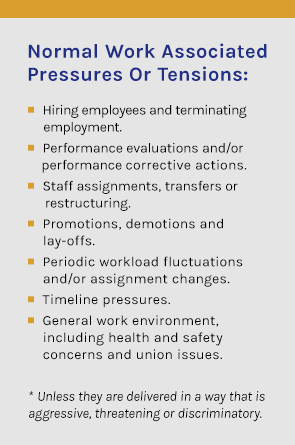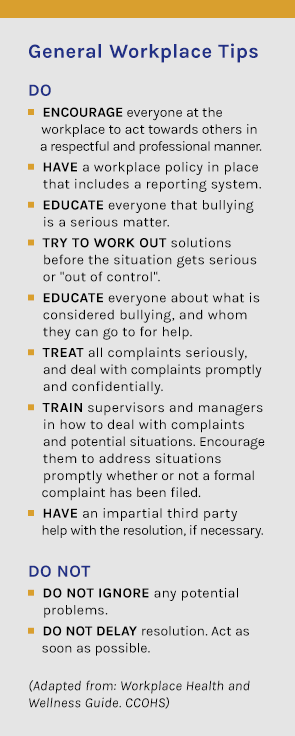Bullying & Harassment: Is it an Acceptable WCB Stress?

While there was a time when the stress of your job did not constitute the basis of an acceptable workers’ compensation claim, the times they are changing, or so it may seem.
With the emergence of campaigns like anti-bullying, #MeToo, and #BellLetsTalk (coming up later this month on January 29th), discussions around mental health issues and their impact on how we live has become more prevalent. Issues like bullying (including cyber-bullying), harassment and post-traumatic stress disorder (PTSD) are being more widely recognized, acknowledged and accepted in a work-related context.
Although ‘stress’ is not a medically accepted diagnostic term, mental stress is commonly used to describe a person’s non-specific physical and psychological response to the events or changes that occur in his or her life. These events are known as stressors and stressors are a normal part of life. If a person’s ability to cope with stressors is overwhelmed; distress, a negative form of mental stress can develop and interfere with their ability to function normally. When the stressors originate from or are associated with someone’s job, work-relatedness comes into question.
The Workers’ Compensation Board of Alberta (WCB) has long accepted mental stress claims but only under strict criteria. However, the WCB has recently reviewed and revised it’s policies and procedures regarding the compensability of these claims. While the conditions under which mental stress claims are acceptable remains stringent, the circumstances from which stress claims can develop has been broadened to address cases of workplace bullying and harassment.

Recent changes to WCB Policy 03-01, Part II, Application 6: Psychiatric or Psychological Injury include additions
to Question 8 regarding the compensable traumatic onset of psychological injury or stress:
“…Traumatic event(s) may also include workload or work-related interpersonal events that are excessive and unusual in comparison to the pressures and tensions experienced in normal employment (see Question 9). Thesemust be beyond the normal scope of maintaining employment from a reasonable person’s perspective. For example, clear and confirmable harassing behaviour at the workplace where a worker has been subjected to threats of harm, violations of personal privacy, public shaming or baseless threats to his or her employment status…
And the introduction of Question 9 regarding normal pressures and tensions of employment:
“…Interpersonal events between a worker and coworkers, management, or customers are not considered traumatic events unless they result in behaviours that are considered aggressive, threatening, or discriminatory…”
The revisions attempt to differentiate between what meets the WCB criteria of “arising out of and occurring during the course of employment” and what is considered a normal part of employment and/or a non-occupational factor.

Workplace bullying and harassment are not new but the acknowledgment that it is a systemic problem that needs addressing is a
major step forward to changing attitudes. The downside is that it may result in an increase in WCB claims which ultimately impacts employers’ WCB premiums.
So what can an employer do? As with all aspects of workplace safety, prevention is the most effective way of avoiding WCB claims and early intervention is key to containing costs should a claim be initiated. Implementing these 6 steps can ensure your organization is prepared:
- Develop a written workplace violence prevention program with input from all levels of the organization. Management commitment and employee engagement are the most important components to the success of any workplace prevention program.
- Educate and regularly remind all employees of company policies and procedures regarding bullying or harassment and what company expectations are.
- Establish a safe and confidential reporting channel for victims and witnesses, through computer software or mobile apps.
- Treat any complaint of bullying or harassment seriously, then thoroughly investigate all reported cases.
- Take a transparent zero-tolerance approach to discriminatory words or actions.
- Provide access to a support network either through an Employee Assistance Program (EAP) or external resources.
Creating a work environment that is inclusive, supportive and harassment-free is a proactive way to improve the safety culture of your workplace.
If you have concerns about bullying and harassment in your organization, additional information can be found for employers and workers on the WCB Alberta website or at the Canadian Centre for Occupational Health and Safety. You can contact us directly, during business hours, using our chat feature or by phone at 1-844-377-9545, you can reach us by email at [email protected], [email protected], and you can always connect with us on Facebook, Twitter, or LinkedIn.




